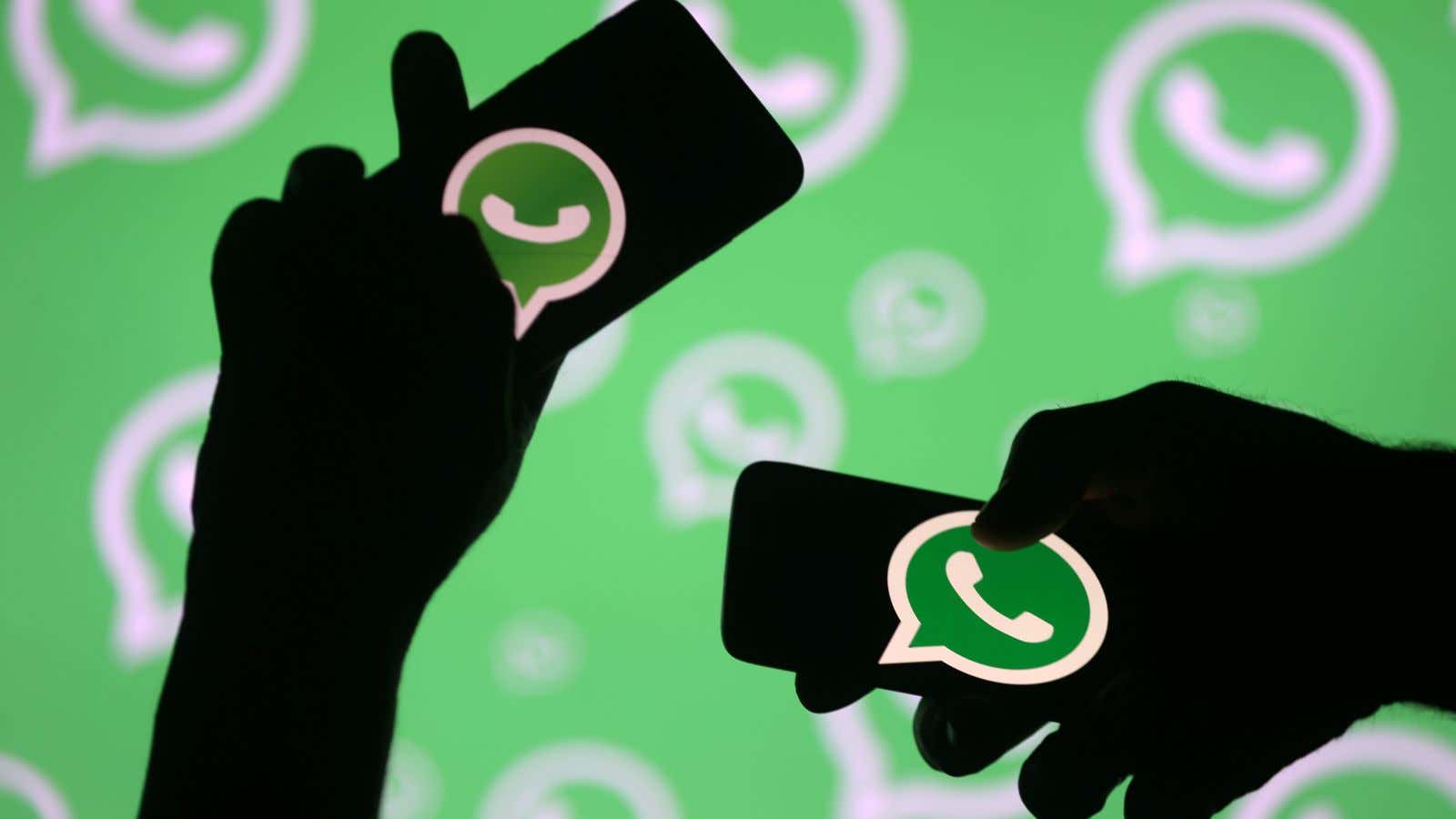There may be a silver lining to the millions of annoying “good morning” memes that Indian users of WhatsApp have to contend with: money.
The ubiquitous Facebook-owned messaging platform has rolled out an electronic payments service for India. It is the latest entrant—Google launched Tez in September—in an already crowded ecosystem in India that has over 100 players, including over 60 non-banking players like Paytm, Amazon Pay, Mobikwik and Flipkart (PhonePe).
With India’s e-payments pie estimated to grow over five times to $1 trillion by 2023, according to a Credit Suisse report, such a rush is hardly a surprise. But most e-wallet operators aren’t profitable in India yet. Besides, many of those who have been issued licences by the Reserve Bank of India are yet to begin operations as they are still evaluating the situation, given the stiff competition, say analysts. The entry of big players like WhatsApp and Google at this juncture could mean the end of the road for smaller, struggling firms.
After all, WhatsApp has over 200 million active monthly users in India, just a little less than Brazil’s entire population. And the platform is now leveraging that massive reach in the world’s third-largest economy.
Welcome WhatsApp
WhatsApp has only launched the beta version of the payments feature for now. It is partnering with large banks and will use the Indian government-backed Unified Payment Interface (UPI) that allows inter-bank transfers. To transfer funds via UPI, customers don’t even need to remember the recipients’ bank details, instead they only need a customer id which is set by the recipient and can be the phone number, name, etc. Others like Google’s Tez and Truecaller’s payment app, too, are based on UPI.
An email sent to WhatsApp seeking details of the launch remained unanswered.
Meanwhile, in peer-to-peer communication, WhatsApp has emerged as the choice for 96% of Indians, as per a report by Jana, a free internet provider.
“It isn’t just the number of users, but also in terms of engagement levels, WhatsApp scores way higher than other apps. Therefore, theoretically speaking, it will be easier for it to engage customers who are looking at making peer-to-peer payments,” said Vivek Belgavi, who heads financial services technology at PwC India.
However, for now, Indians may not be entirely open to paying for online payment services. In fact, they may even seek cash-backs or other such offers. So data-driven companies like Google or WhatsApp may find it easier to provide tailored offers since they already have plenty of customer-related information, experts added.
In fact, four months since the launch of Tez in September, it is already processing the same number of digital transactions as Axis Bank, which is the fourth-highest digital player among banks, the Credit Suisse report says.
WhatsApp’s entry could now lead to an explosion in the number of transactions.
Fight for survival
The presence of these large companies will also help grow India’s payments ecosystem, given their capacity to invest, offer better technology, and a large diversified customer base, said Khushroo B Panthaky, director, Grant Thornton Advisory.
However, all this may not be good news for everyone.
“The ecosystem is rapidly evolving in India and only a few major players are going to survive. The rest will have to either shape up or ship out,” said Pavel Naiya, senior analyst at Counterpoint Research.
In fact, consolidation will be the main thrust over the next few years, believes Panthaky. “The bigger players will be looking at business opportunities to expand their footprint.”
Opportunity and challenges
The government, in the meantime, has been aggressively pushing e-payments to reduce the country’s dependence on cash. In November 2016, it demonetised two high-value currency notes, resulting in a severe cash shortage—prodding people to look for digital alternatives.
Since then, cash has returned to almost pre-demonetisation levels though bankers claim e-payments have grown rapidly, too.
Therefore, despite competition, there are plenty of opportunities that need to be identified. For instance, instead of companies looking primarily at urban customers who are already using digital modes of payments, firms have potential openings in areas where where cash still rules. “Like players such as Oxigen (a mobile-wallet player) have now been focusing on the remittance market as there is still scope to grow there. Similarly, MobiKwik has been partnering with banks and merchants to tap opportunities instead of just focusing on peer-to-peer payments,” said Naiya of Counterpoint Research.
If the companies do not look at segments which are not too crowded and where there is an opportunity for them to make money, then it is a bleak future for them, said Naveen Surya, chairman, Payments Council of India. “Firms will have to create a compelling case for people to use digital money, like some firms did with taxis in India to break the clutter,” Surya said.
If WhatsApp plays its cards right, it has the potential to become as big as WeChat, China’s largest messaging application with over 960 million monthly active users. In any case, it has sent out a new WhatsApp meme to existing banking and non-banking digital payments players: “Good morning, and better watch out.”
